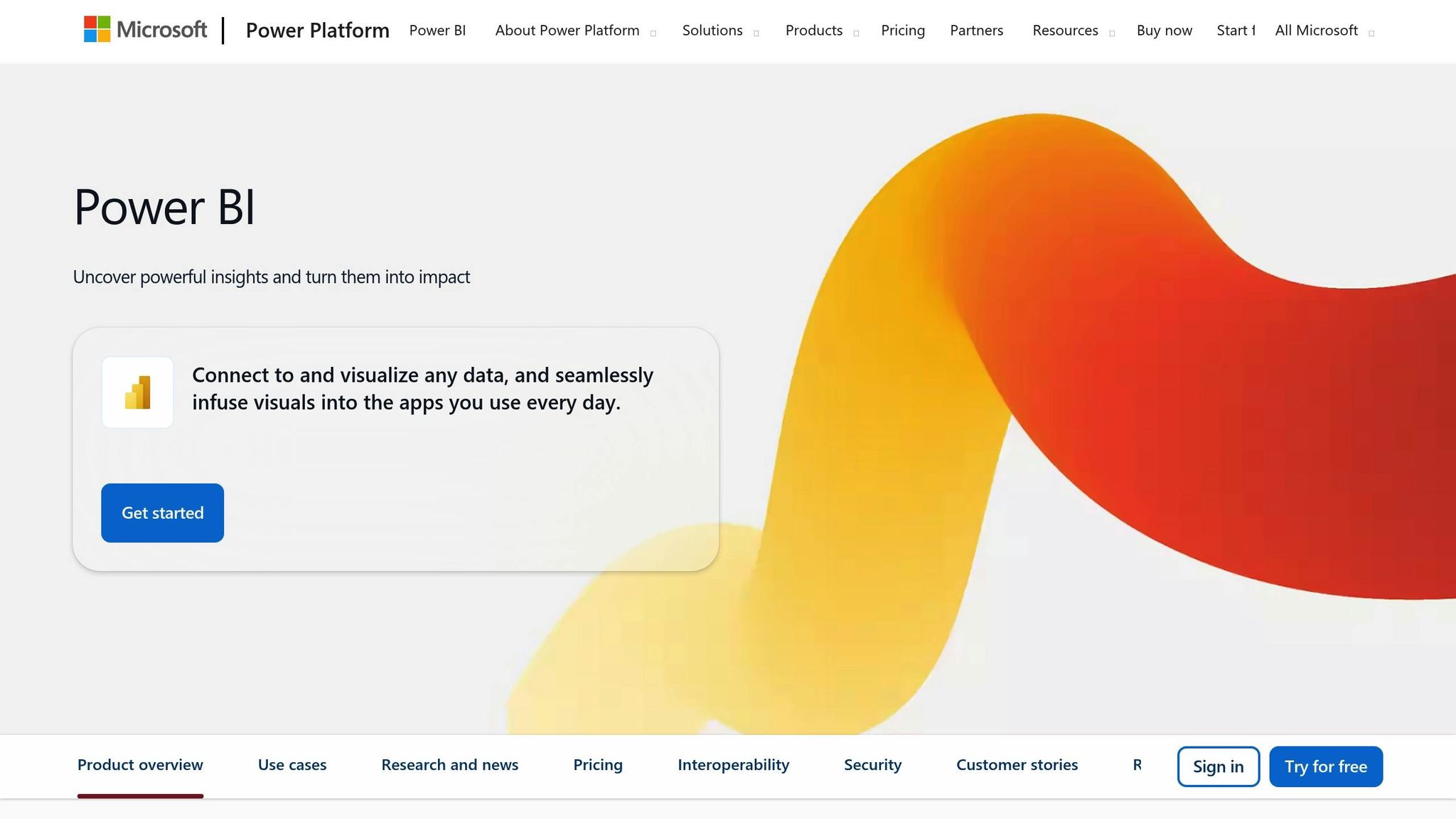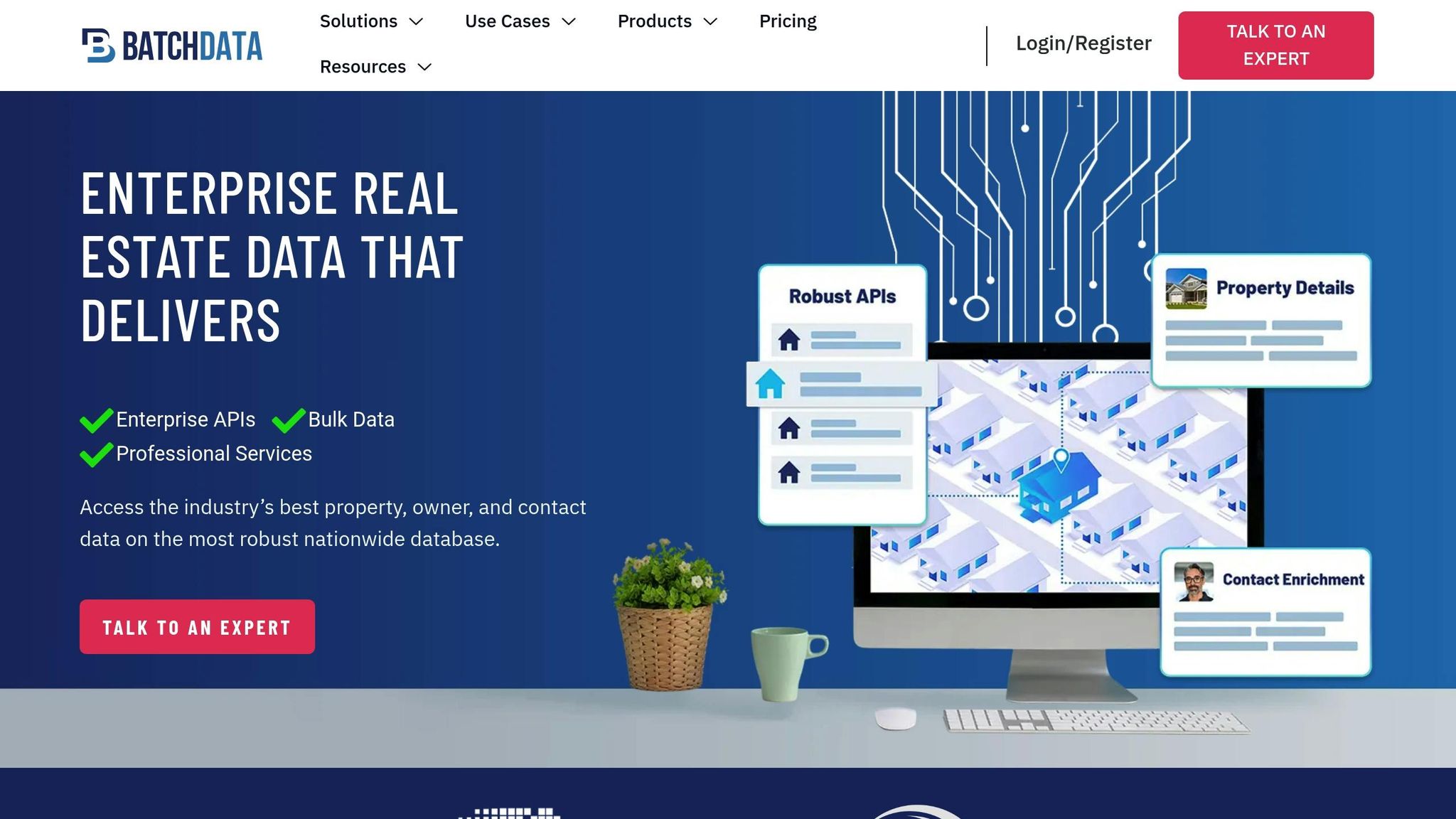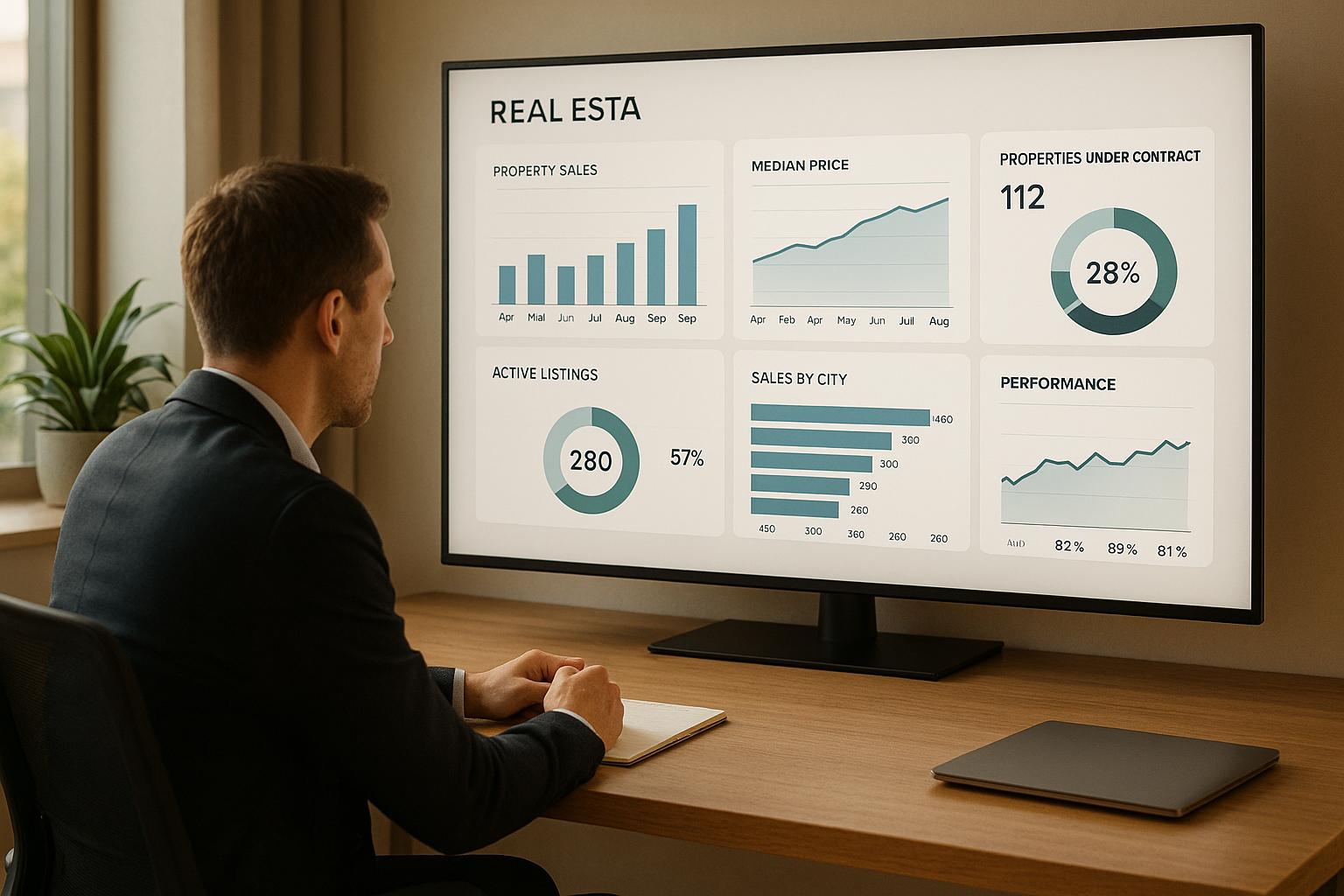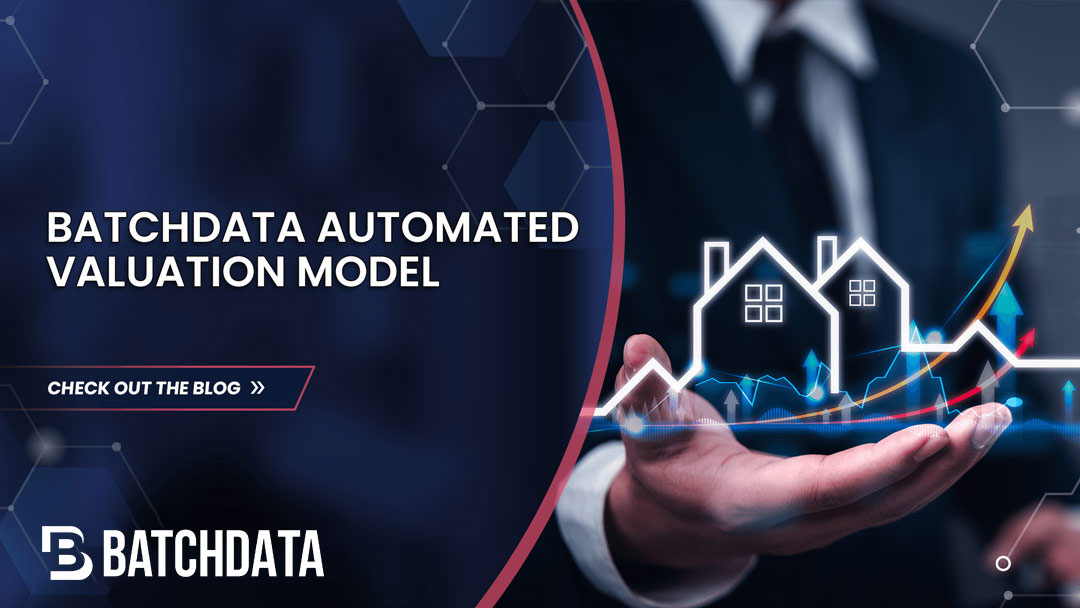Custom BI dashboards simplify decision-making for real estate teams by combining data from multiple systems into one real-time, interactive view. These tools help professionals track market trends, monitor property performance, and manage financials with ease. Key features include:
- Portfolio Monitoring: Track occupancy rates, maintenance costs, and tenant satisfaction across properties.
- Agent Performance Analytics: Measure sales, conversion rates, and productivity to support team management.
- Financial Insights: Analyze revenue, expenses, and profitability while forecasting cash flow and managing budgets.
- Market Analysis: Use heat maps and comparative tools to identify opportunities and refine pricing strategies.
- CRM and Lead Tracking: Follow leads through the sales funnel, measure conversion rates, and optimize marketing efforts.
Power BI Property Management Dashboard | Track ROI in Real-Time

Core Features of Real Estate BI Dashboards
Custom BI dashboards provide real estate teams with interactive insights that help them identify trends, seize opportunities, and tackle potential issues before they escalate. These tools go beyond basic reporting, offering a transformative way to track performance and make informed decisions. Let’s dive into how these features enhance property monitoring, agent analytics, and financial insights.
Property Portfolio Monitoring
Property portfolio monitoring delivers a bird’s-eye view of an entire portfolio, tracking key metrics like occupancy rates, maintenance costs, and tenant satisfaction. These dashboards make it easy to identify underperforming assets. For instance, vacancy trends are highlighted with color-coded charts, pinpointing properties with declining occupancy or extended vacancies.
Financial data for individual properties – such as rental income, maintenance expenses, and net operating income – are displayed side-by-side, simplifying comparisons across the portfolio. This allows property managers to quickly spot top-performing properties and those that may need attention. Additional features include tracking maintenance requests, lease renewals, and tenant satisfaction scores, painting a complete picture of property health.
Geographic mapping tools add another layer of insight, displaying portfolio performance by location. These maps use color-coded markers to reflect metrics like occupancy rates or profitability, helping teams make smarter decisions about expanding or selling properties.
Performance analytics also play a key role in optimizing sales operations, ensuring teams stay on track.
Broker and Agent Performance Analytics
Performance analytics modules revolutionize how real estate teams manage their sales force by offering real-time insights into individual and team performance. Dashboards track closed deals, transaction volumes, and conversion rates, while also monitoring activity metrics like property showings and client meetings. This fosters accountability and provides the data needed to offer strategic support.
Conversion rate analysis helps identify top-performing agents and the marketing channels that generate the best leads. These dashboards also provide visibility into work patterns and productivity levels. Real-time commission tracking keeps agents informed about their earnings, motivating them to hit monthly or quarterly goals.
Team comparison charts allow managers to benchmark performance across agents or offices, encouraging healthy competition and sharing of best practices. Beyond sales metrics, the financial insights feature lays the groundwork for effective strategic planning.
Financial and Budgeting Insights
Financial dashboards provide a clear overview of revenue and expenses, helping teams manage budgets and forecast more effectively. By integrating data from accounting systems, property management platforms, and banking tools, these dashboards offer a comprehensive financial snapshot.
Revenue tracking breaks down income streams like rental payments, sales commissions, and other earnings by property, agent, or time period. Cash flow projections allow teams to anticipate future financial needs and address potential shortfalls before they become serious. Expense monitoring covers a range of costs, from marketing and office expenses to property maintenance and agent commissions.
Profitability analysis tools calculate margins at various levels – property, agent, or company – making it clear which areas of the business are driving the strongest returns. Budget variance reports flag discrepancies between projected and actual spending, enabling quick adjustments.
ROI calculations for marketing campaigns pinpoint which advertising efforts are delivering the best results, ensuring marketing budgets are allocated effectively. Integration with banking systems adds yet another layer of transparency, offering real-time account balances and transaction histories to keep managers fully informed of their financial standing.
Key Real Estate Use Cases for Custom BI Dashboards
Custom BI dashboards are transforming real estate operations by simplifying complex data and turning it into actionable insights. From market analysis to property management and client relationships, these tools empower teams to make smarter, data-driven decisions. Let’s explore some of the top ways real estate professionals are using these dashboards to achieve measurable results.
Market and Deal Analytics
Market analytics dashboards give real estate teams a competitive edge by uncovering profitable opportunities. By segmenting data based on tenant type, location, asset class, and market conditions, these dashboards help teams identify emerging trends early.
When internal pipeline data is combined with external market indicators – like median home prices, inventory levels, and average market days – deal tracking becomes much more strategic. This allows teams to fine-tune pricing strategies and focus on the most promising markets.
Heat maps are another powerful tool, offering a clear visual representation of neighborhood-level market performance. These maps can be enhanced with additional data layers, such as school ratings, crime statistics, or planned infrastructure developments, giving teams a comprehensive view of investment opportunities.
Comparative market analysis features streamline the pricing process by benchmarking properties against similar assets in real-time. Instead of manually searching for comparable sales data, these dashboards automatically update with the latest transactions and market trends, ensuring decisions are based on the most current information.
Occupancy and Availability Analysis
For property managers, portfolio-wide occupancy tracking provides a clear, real-time view of unit availability. Dashboards highlight properties or units that have been vacant longer than average, helping to uncover potential issues that need attention.
Metrics like average days vacant, seasonal occupancy trends, and lease renewal rates are tracked to anticipate vacancies and adjust marketing efforts accordingly. This proactive approach ensures steady occupancy levels and minimizes revenue gaps.
Availability forecasting tools take it a step further, predicting future vacancies based on factors like lease expiration dates, historical renewal rates, and market conditions. Property managers can use this data to plan leasing campaigns well in advance, smoothing out periods of high turnover.
Rent roll analysis offers detailed insights into revenue streams, breaking down earnings by unit type, lease terms, and tenant demographics. Teams can quickly identify which units are the most profitable and adjust their property mix to maximize returns. Integration with maintenance data also highlights how property conditions impact tenant retention, enabling better long-term planning.
Lead and CRM Analytics
Lead analytics dashboards revolutionize customer relationship management by offering a complete view of the sales funnel. They track leads from the first interaction through closing, measuring conversion rates at each stage and pinpointing bottlenecks that slow the process.
With source attribution features, teams can identify the most effective marketing channels – whether it’s online ads, referrals, or open houses – by comparing conversion rates. This ensures marketing budgets are spent where they’ll have the greatest impact.
Client retention analysis goes beyond tracking transactions, focusing on long-term relationship value. Dashboards monitor repeat clients, referrals, and customer lifetime value, helping agents prioritize high-value clients who are likely to bring in future business.
Activity correlation tools provide insights into which actions – such as follow-up calls, showings, or emails – are most closely tied to successful conversions. These insights help teams refine their approach and adopt best practices.
By integrating BatchData’s enrichment services, teams can deepen client profiles and property insights, making CRM analytics even more effective. This enriched data allows for a more personalized approach, leading to improved conversion rates and stronger client relationships.
Communication tracking features round out the CRM toolkit by monitoring response times, touchpoint frequency, and client satisfaction scores. Teams can identify top-performing agents and uncover opportunities to enhance customer service across the board.
These specialized use cases illustrate the value of tailored BI dashboards, offering endless opportunities for customization and seamless data integration to meet the unique needs of real estate professionals.
sbb-itb-8058745
Advanced Customization and Data Integration
Custom BI dashboards are designed to cater to the unique needs of each organization, turning generic reports into solutions specifically aligned with individual workflows, roles, and goals. These dashboards can be tailored to match the specific responsibilities of various roles within a company, ensuring that everyone gets the insights they need to excel.
Custom KPIs and Role-Based Views
For real estate organizations, role-specific dashboards are a game-changer, as they present only the most relevant data to each team member. For example, a property manager might prioritize maintenance requests, vacancy rates, and tenant satisfaction metrics, while a sales director would focus on pipeline performance, conversion rates, and revenue projections.
The ability to create custom KPIs allows teams to track the metrics that align most closely with their business strategies. For instance, a commercial real estate firm could develop a KPI that combines leased square footage, average lease duration, and tenant credit scores to gauge the overall health of its portfolio. These tailored metrics often provide deeper insights than standard benchmarks, as they reflect the organization’s specific goals and market positioning.
Access controls and permissions ensure that sensitive data, such as financial reports or commission structures, is only visible to authorized personnel. At the same time, operational metrics can remain open to front-line staff. This granular access strikes a balance between maintaining security and fostering transparency.
Interactive filtering features further enhance usability, allowing users to focus on specific time periods, geographic areas, or property types without overwhelming the dashboard. A regional manager, for example, can seamlessly toggle between citywide performance metrics and the details of individual properties, making the dashboard equally effective for strategic planning and day-to-day operations.
Integration with External Data Sources
Customization is just one part of the equation – integrating external data takes dashboards to the next level. By combining internal data with external market intelligence, BI dashboards become powerful tools for strategic decision-making. Real-time market data integration transforms static reports into dynamic systems that adapt to changing conditions.
For example, property valuation models can be significantly improved by incorporating external factors like local employment rates, planned infrastructure projects, and demographic trends alongside internal transaction data. This kind of integration helps businesses spot opportunities before competitors do.
APIs streamline this process by automatically syncing data, reducing manual input and minimizing errors. When systems like property management platforms, CRM tools, and accounting software feed directly into a dashboard, teams can trust that the information is always up-to-date.
Third-party data enrichment can also fill in any gaps in internal datasets, providing additional details such as property specifications, contact information, and market comparables. This enriched data enhances predictive models, helping teams make smarter decisions about acquisitions, pricing, and marketing strategies.
Integrating Geographic Information Systems (GIS) adds another layer of insight by enabling visual mapping of market trends, property locations, and demographic patterns. These visual tools often uncover relationships that spreadsheets alone might miss – like how proximity to transit hubs impacts rental prices.
BatchData‘s Role in Custom Dashboards

High-quality data integration is the backbone of effective dashboards, and BatchData plays a critical role in making this possible. Their comprehensive data solutions ensure that BI dashboards are powered by accurate, enriched data for precise analysis.
The property search API provides real-time market data, including current property values, comparable sales, and trend insights, eliminating the need for manual updates. This ensures that investment decisions are always informed by the most recent data. Additionally, contact enrichment and skip tracing features improve CRM analytics by delivering complete client profiles, enhancing lead scoring accuracy, and identifying top prospects for follow-up.
BatchData also supports large-scale dashboard implementations through bulk data delivery services. These datasets are particularly useful for organizations building new dashboards or expanding into new markets, as they provide the historical and comprehensive data needed for robust analysis.
Their professional services offerings go a step further, providing expertise in custom data pipeline development and integration consulting. This ensures that real estate teams can build advanced BI workflows tailored to their specific needs, maximizing the value of their dashboards by focusing on metrics that drive growth.
Phone and address verification services further enhance data accuracy across all metrics, ensuring that communication tracking, contact rates, and delivery success are based on reliable information. Clean, verified data is essential for trustworthy analytics, and these services provide the foundation for meaningful reporting.
Finally, BatchData’s pay-as-you-go pricing model offers flexibility, allowing organizations to experiment with different data sources and integration methods without the burden of long-term commitments. This approach encourages iterative development, enabling teams to refine their dashboards based on actual usage and evolving needs.
Conclusion: Benefits of Custom BI Dashboards
Custom BI dashboards are transforming the real estate industry by addressing long-standing challenges and enhancing operational efficiency. By replacing manual reporting with automated, data-driven insights, these tools are reshaping how real estate teams make decisions and manage their day-to-day operations.
With instant access to real-time market conditions, portfolio performance, and operational metrics, professionals no longer need to rely on delayed reports. This immediacy empowers teams to act quickly on market opportunities, adjust pricing strategies in response to shifting conditions, and address potential issues before they escalate into costly problems.
These dashboards go beyond simply improving efficiency – they also provide tailored insights for specific roles. Automation reduces time spent on repetitive tasks and minimizes errors in critical real estate transactions. Additionally, by consolidating fragmented data sources into a single, unified view, teams can eliminate the inefficiencies of juggling multiple systems.
Every role within a real estate organization – whether it’s property managers, sales directors, or investment analysts – has unique data needs. Custom dashboards ensure that each team member gets access to the most relevant information, cutting through the noise and allowing them to focus on what matters most.
Interestingly, only 45% of real estate companies feel they are effectively leveraging their data. By integrating internal systems with external market intelligence, custom BI dashboards turn raw data into meaningful insights that support strategic planning and foster a competitive advantage.
The benefits don’t stop at individual productivity. Shared, role-specific dashboards encourage better communication and collaboration across teams. This leads to quicker consensus on critical decisions and smoother coordination between departments.
For organizations adopting these solutions, advanced customization and seamless data integration – such as those offered by BatchData – ensure that dashboards remain valuable over time. Their ability to adapt to evolving business needs makes them indispensable tools for staying ahead in today’s data-driven real estate landscape.
FAQs
How can custom BI dashboards improve decision-making in real estate?
Custom BI dashboards give real estate professionals a clear view of real-time data on property performance, market trends, and operational metrics. These tools simplify spotting patterns, forecasting outcomes, and making quick, informed decisions.
By turning complex data into an easy-to-digest format, these dashboards help professionals refine strategies, improve teamwork, and boost profitability. From monitoring key performance indicators to analyzing shifts in the market, custom dashboards equip users with the insights they need to stay ahead in the fast-paced real estate industry.
What features should real estate teams prioritize in a BI dashboard?
When choosing a BI dashboard, real estate teams should prioritize tools that offer real-time data visualization for essential metrics like property portfolio value, rental income, occupancy rates, and operational performance. Dashboards with interactive filters and customizable views make it easier to explore data, while a user-friendly interface ensures smoother decision-making.
Key features to look for include trend analysis tools, dual-axis charts to compare time-based metrics (such as market trends and pricing), and centralized tracking for KPIs and forecasts. These tools can streamline operations and uncover opportunities for growth. A well-crafted BI dashboard equips teams to make faster, more informed decisions based on clear, actionable insights.
How does integrating external data into a BI dashboard benefit real estate professionals?
Integrating external data into a custom BI dashboard provides real estate professionals with a deeper, more rounded understanding of market trends, property performance, and demographic insights. This broader perspective enables teams to identify opportunities, reduce risks, and make informed decisions based on data.
With tools offering real-time insights and predictive analytics, professionals can fine-tune property valuations, improve investment strategies, and streamline operations. This integration equips real estate teams to stay competitive and adapt effectively in an ever-evolving market.



